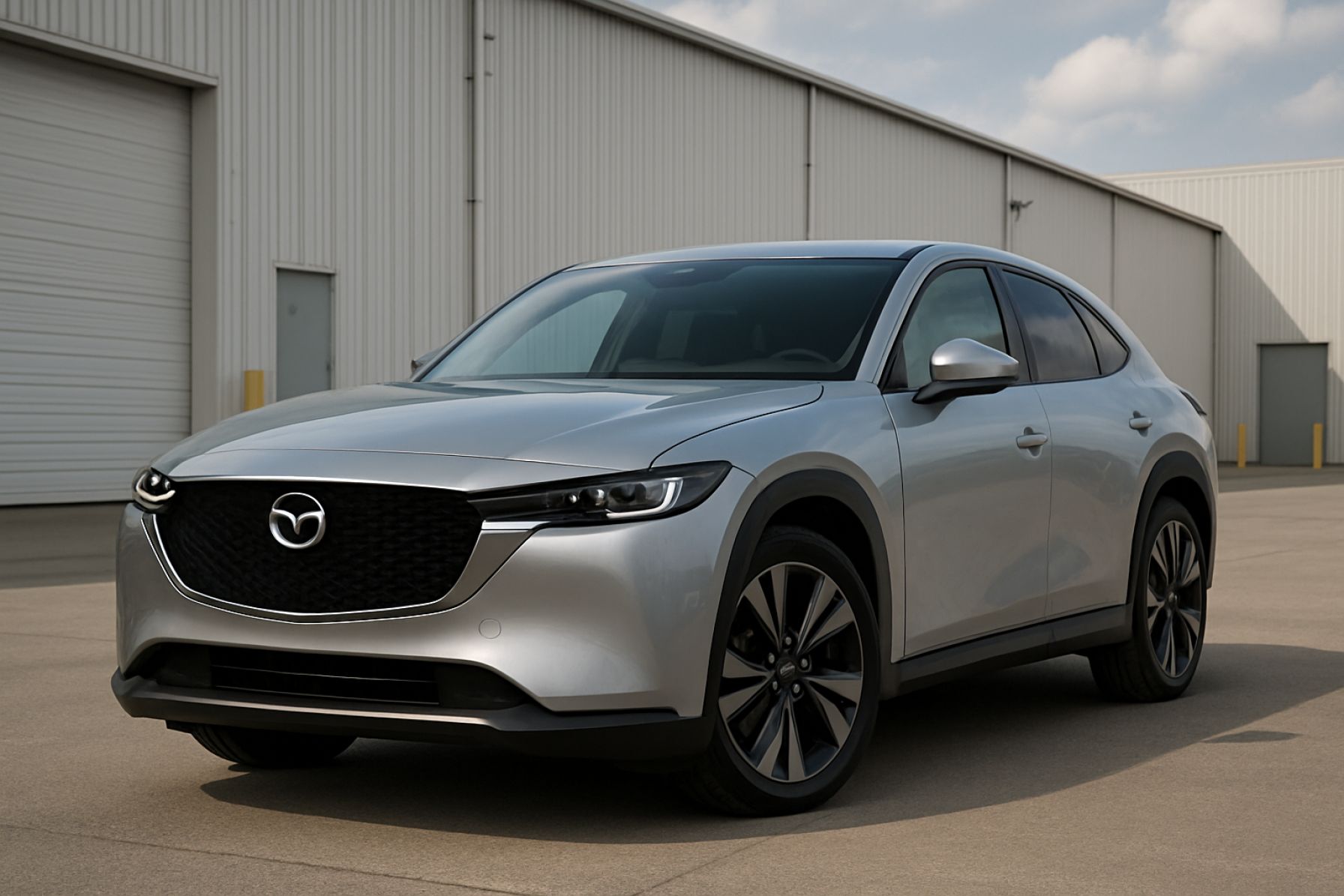Mazda Unveils Game-Changing Japan-Built EV to Take on U.S. Tariffs—And the Auto World Is Watching
Mazda announces its first dedicated Japan-built EV for 2027, aiming to dodge U.S. tariffs with cutting-edge tech and flexible production.
- 25% — U.S. auto tariff that Mazda aims to beat
- 2027 — Planned launch year for Mazda’s first Japan-built EV
- 85% — Investment saved by flexible mixed production lines
- 40% — Mazda’s target EV share of global sales by 2030
Mazda is quietly preparing a major comeback in the electric vehicle arena—this time, with a bold twist. The automaker confirmed its first dedicated electric vehicle will be built in Japan from 2027, ready to challenge the roaring 25% auto tariffs imposed by the U.S. government. Mazda’s bold move sends shockwaves through both the Japanese and American auto markets.
The buzz began when Mazda unveiled plans for a next-generation module pack plant in Japan, teaming up with Panasonic for advanced lithium-ion battery tech. The highly anticipated EV will roll out of Mazda’s state-of-the-art Hofu H2 factory, where the production line can flip between gas, hybrid, and EV models in a heartbeat.
Why Is Mazda Building Its EVs in Japan?
Over the past year, tariffs and trade tensions have clouded the U.S. auto industry, with the Biden and Trump administrations both targeting imported electric vehicles. But Mazda isn’t backing down. Armed with Panasonic battery modules and “cutting edge” engineering, the automaker plans to sidestep the dreaded 25% tariff and bring advanced, affordable EVs to American roads.
Flexible production methods mean Mazda can control investments, keep lead times shorter, and quickly respond to global demand shifts. This multipurpose assembly line slashes costs by 85% and dramatically boosts speed—a game-changer for Mazda as it races to catch up with rivals like Tesla and Ford.
Q: What Models Will Lead Mazda’s Electric Future?
Mazda’s first dedicated Japan-built EV hasn’t been fully revealed—details about its pricing, range, and performance are still under wraps until its debut in 2027. However, both insiders and fans look eagerly to models like the overseas 6e electric sedan and the CX-6e SUV (already seen in China and Europe) as benchmarks for what’s coming to the U.S.
Mazda’s timeline aligns with its “electrify everything” pledge for 2030, aiming for 25% to 40% of its global sales to be fully electric. Industry insiders say mixed production lets Mazda easily adjust how many EVs, hybrids, or combustion cars it sells, based entirely on what customers want.
How Can Mazda Compete With American and Chinese EV Giants?
The EV race is tight. Mazda faces a flood of more affordable and tech-savvy competitors from both U.S. and Chinese automakers. Some remember Mazda’s first U.S. EV failure, the MX-30, discontinued in 2023. This time, officials claim, things are different. With flexible plants and supply deals, Mazda bets it can pivot fast and survive the tariff storm.
Their secret weapon: adaptability. As tariffs intensify and EV demand fluctuates, Mazda can tweak production at will—building whichever type of vehicle is most in-demand, without huge investments or delays. It’s a “future-proof” strategy, and the world is watching closely.
Mazda’s Upcoming EV: What Should Buyers Expect?
Although Mazda’s U.S.-bound EV has yet to be revealed, industry experts expect it to feature the latest Japanese battery tech, efficient production, and a price tag designed to challenge both new and legacy automakers. The world’s leading battery makers, such as Panasonic, promise Mazda the edge it needs to compete on both cost and quality.
Mazda’s approach will likely influence rivals across the globe. With flexible lines, “just-in-time” assembly, and a focus on shifting market needs, Mazda could set a new standard that reshapes global EV competition.
Ready to See Mazda’s Next Move? Stay Updated:
– Follow automotive news via Mazda
– Compare with U.S. trends at Car and Driver
Don’t Get Left Behind—Keep Watch as Mazda Electrifies the Road Ahead!
- Monitor Mazda’s Japanese factory rollout in 2027
- Check for updates on official specs and pricing
- Compare with upcoming rival EVs and industry shifts
- Stay tuned for Mazda’s 2030 electrification progress










